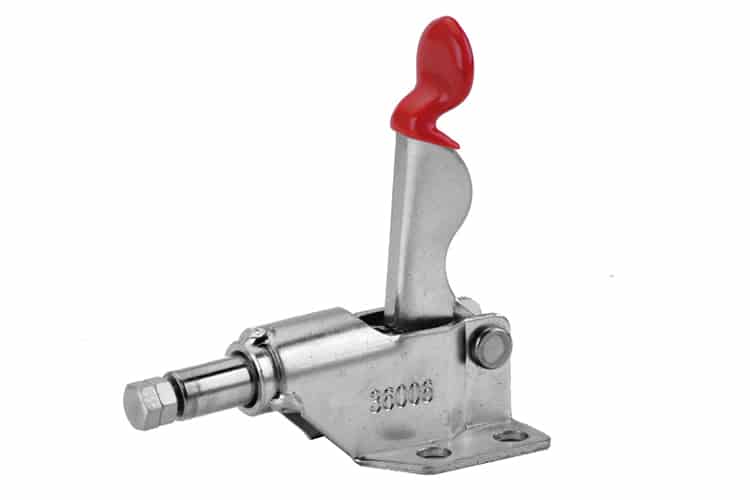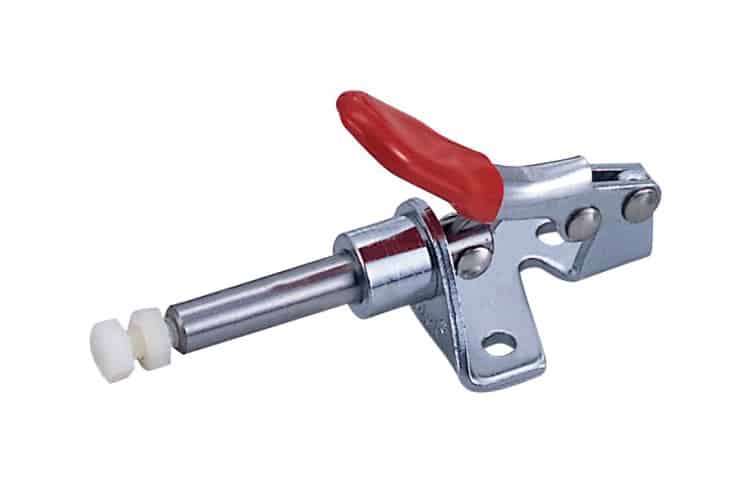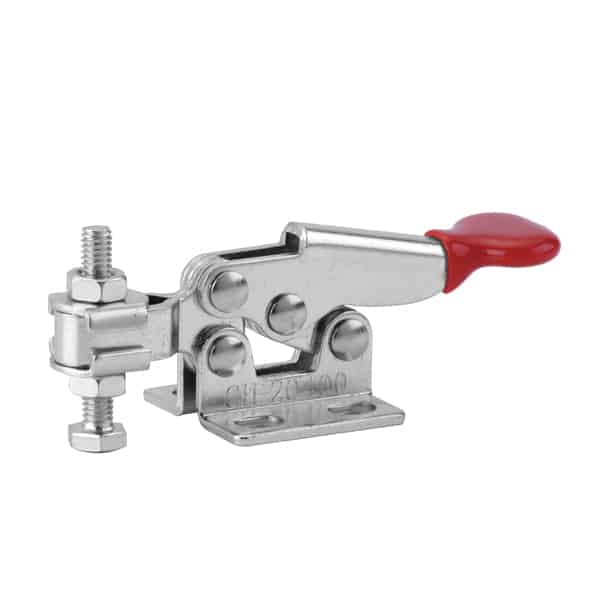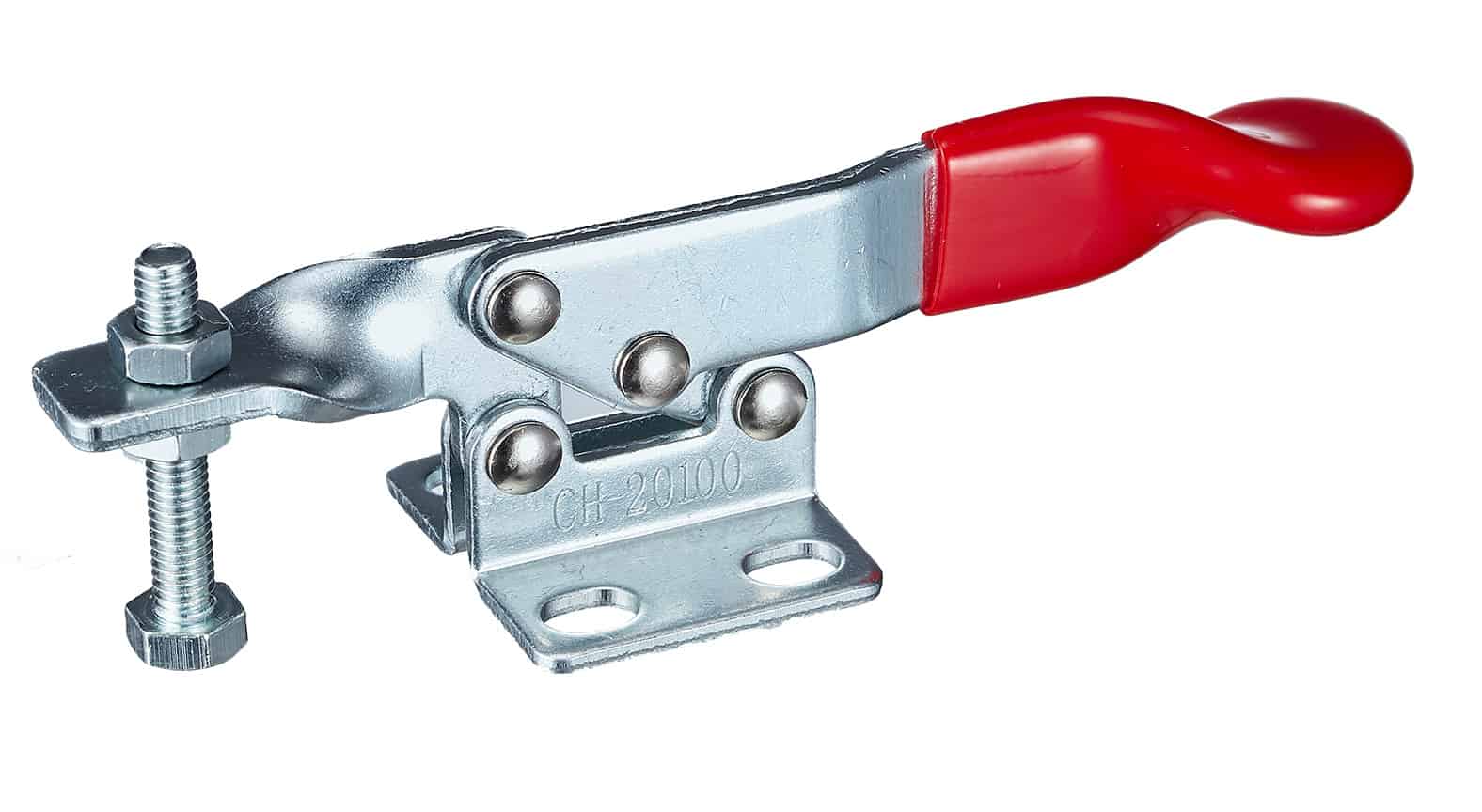Small horizontal toggle clamps are essential tools in many industries due to their versatility, precision, and ease of use. In this guide, we’ll explore the many benefits and applications of these clamps. As well as how to select and use them properly.
Small horizontal toggle clamps are a type of clamping mechanism. Commonly used in various applications where precision and stability are essential. They are versatile and compact, making them ideal for use in small spaces where larger clamps may not fit. In this essay, we will explore eight questions related to small horizontal toggle clamps. Including their components, advantages, force exertion, types, materials, applications, and installation and use.
What is a small horizontal toggle clamp?
A small horizontal toggle clamp is a clamping mechanism that consists of a horizontal bar and a clamping arm. And a handle that pivots on a pivot pin. When the handle is pulled down, the clamping arm moves toward the horizontal bar, exerting pressure on the workpiece and securing it in place. When the handle is released, the clamping arm returns to its original position. Allowing for the easy removal of the workpiece. Small horizontal toggle clamps are designed for use in tight spaces. And are often used in applications such as woodworking, metalworking, and electronics assembly. You can also read more about it on our topic page about horizontal toggle clamps.

What are the main components of a small horizontal toggle clamp?
Small horizontal toggle clamps consist of several components, including a horizontal bar, a clamping arm, a handle, a pivot pin, and a locking mechanism. The horizontal bar is a sturdy, straight metal bar that provides a stable base for the clamp. The clamping arm is a movable metal component that is designed to clamp down on the workpiece. The handle is attached to the clamping arm and is used to operate the clamp. The pivot pin connects the handle and the clamping arm to the horizontal bar, allowing the handle to pivot and the clamping arm to move. Finally, the locking mechanism is used to keep the clamp in place once it has been tightened.
What are the advantages of using a small horizontal toggle clamp?
Small horizontal toggle clamps offer several advantages over other types of clamps. For one, they are very versatile and can be used in a wide range of applications, from woodworking to metalworking. They are also compact, making them ideal for use in tight spaces. Additionally, they are easy to operate, with a simple handle that can be pulled down to tighten the clamp and released to loosen it. Finally, they provide a high level of precision and stability, ensuring that the workpiece is held securely in place.

How much force can a small horizontal toggle clamp typically exert?
The amount of force exerted by a small horizontal toggle clamp depends on the specific model and its design. Generally, however, small horizontal toggle clamps are designed to exert a moderate amount of force, typically in the range of 100-500 pounds. This level of force is usually sufficient for most applications where a small horizontal toggle clamp would be used, such as woodworking or electronics assembly.
What are the different types of small horizontal toggle clamps available?
There are several different types of small horizontal toggle clamps available, each with its own unique design and features. Some of the most common types include:
Standard toggle clamps: These are the most basic type of small horizontal toggle clamp and are designed for general-purpose use.
Push-pull toggle clamps: These toggle clamps are designed to exert force in both the pushing and pulling directions, making them ideal for use in applications where the workpiece needs to be held firmly in place.
Latch-type toggle clamps: These toggle clamps are designed to lock in place once they have been tightened, providing extra stability and security.
Horizontal handle toggle clamps: These toggle clamps have a handle that is oriented horizontally, making them easier to operate in tight spaces.

What materials are small horizontal toggle clamps typically made of?
Small horizontal toggle clamps are typically made of metal, with the most common materials being steel, stainless steel, and aluminum. Steel is a popular choice for toggle clamps because it is strong and durable, while stainless steel is often used in applications where resistance to corrosion is required. Aluminum is also used in some designs because it is lightweight and has good thermal conductivity, which can be useful in certain applications. The components of the clamp are typically machined to tight tolerances, ensuring a precise fit and smooth operation. Usually, some heavy-duty toggle clamps are produced in stainless steel. To ensure the reliability and corrosion resistance of the product.
What are some common applications for small horizontal toggle clamps?
Small horizontal toggle clamps are used in a wide range of applications, including woodworking, metalworking, electronics assembly, and more. They are often used to hold workpieces securely in place during cutting, drilling, welding, or other operations. In woodworking, they may be used to hold pieces of wood together while the glue dries or to secure a workpiece to a jig. And we usually call these clamps woodworking toggle clamps. In metalworking, they may be used to hold a piece of metal in place while it is being cut or shaped. In electronics assembly, they may be used to hold components in place while they are being soldered.

How do you install and use a small horizontal toggle clamp?
Installing and using a small horizontal toggle clamp is relatively simple. To install the clamp, the horizontal bar is typically attached to the work surface using screws or bolts. The clamping arm is then positioned over the workpiece and the handle is pulled down to tighten the clamp. The locking mechanism is engaged to keep the clamp in place. To release the clamp, the locking mechanism is disengaged and the handle is released, allowing the clamping arm to move away from the workpiece.
When using a small horizontal toggle clamp. It is important to ensure that the clamp is properly aligned with the workpiece and that the workpiece is securely held in place. It is also important to avoid over-tightening the clamp, as this can damage the workpiece or the clamp itself. Proper care and maintenance of the clamp. Such as regular cleaning and lubrication can help ensure its long-term performance and reliability.
Based on my personal experience, small horizontal toggle clamps are versatile and reliable clamping mechanisms that are used in a wide range of applications. They offer a number of advantages over other types of clamps, including their compact size, ease of use, and high level of precision and stability. By understanding the components, materials, types, and applications. And proper installation and use of small horizontal toggle clamps, users can select the right clamp for their specific needs and ensure its proper performance and longevity. MAILONG is a professional toggle clamps supplier. If you need of custom-made fixture, please feel free to contact us.
